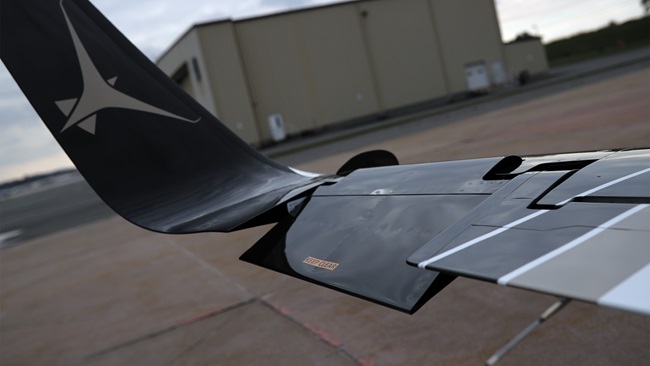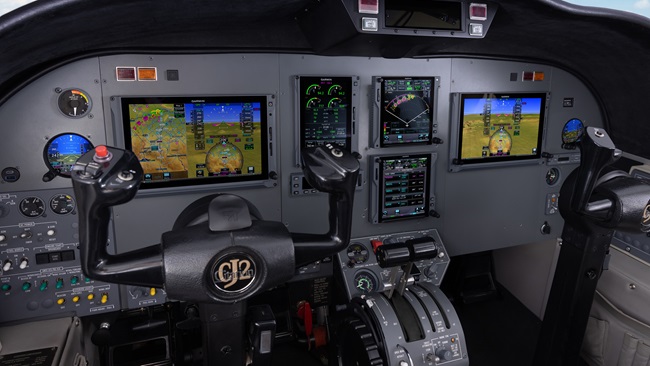Lack of diversity did not impede uAvionix tailBeaconX
Report: Lower-cost dipole antenna design delivers comparable performance
The cost-saving, space-based ADS-B Out solution developed by uAvionix for general aviation aircraft performed well in tests that validated tailBeaconX performance does not suffer from use of a dipole antenna.
Real-world tests of the tailBeaconX were still underway when uAvionix announced its newest ADS-B solution in February 2020, and the results of those tests were published by uAvionix July 7. The report by Capital Sciences, a Virginia-based engineering and analysis consultant that has worked with Aireon to develop Aieron’s space-based ADS-B infrastructure, found that tailBeaconX matched the performance of ADS-B systems with diversity antennas.
TailBeaconX is a Mode S ADS-B transponder that broadcasts aircraft position data gleaned from a built-in, certified, satellite-based augmentation system (SBAS) GPS on 1090 MHz, the frequency used by Aireon’s space-based satellite constellation. A dipole antenna (resembling swept airplane wings oriented vertically) substitutes for the dual-antenna setup of a diversity transponder.
While priced $500 more than the original tailBeacon, the $2,499 tailBeaconX is significantly less expensive to install than a diversity transponder, typically less than half the overall cost, uAvionix noted in a press release.
The space-based approach solves one of the key problems that has slowed global adoption of ADS-B for airspace surveillance and air traffic separation services by eliminating the need to build a far-reaching network of ground stations to receive position reports transmitted by aircraft. The tradeoff is that interference from other terrestrial radio frequency emitters, particularly in densely populated areas, can block aircraft transmissions before they reach the satellite, creating gaps in the aircraft track. (Such gaps explain why ADS-B has not yet replaced radar for airspace surveillance in remote areas, such as the Caribbean, where radar coverage, and the feasibility of building ground stations, is limited.)
Capital Sciences analyzed more than a year of ADS-B data captured by Aireon satellites monitoring Canadian airspace, and compared the performance of 18 aircraft equipped with diversity transponders (with antenna installed on the top and bottom of the aircraft) against 20 aircraft fitted with tailBeaconX. More than 4 million ADS-B transmissions were included in the analysis, the majority of those from commercial aircraft with diversity transponders that flew many more hours than the GA aircraft fitted with tailBeaconX transponders. The probability of update interval (PUI) and probability of long gaps (PLG) were calculated for both groups. Engineers found that tailBeaconX performed slightly better by these measures than diversity transponders, except in and around Montreal, where interference from ground-based radio emissions gave the diversity group a slight edge. (The differences were small: tailBeaconX airborne transmissions were received by the satellite at least every 8 seconds 96.33 percent of the time, including the Montreal-area returns. Excluding Montreal-area returns, the probability of receiving tailBeaconX transmissions at least once in 8 seconds increased to 98 percent, according to the report.)
“This analysis shows that tailBeaconX performs very similarly to traditional diversity transponders, sometimes outperforming and sometimes underperforming, both by very slim margins which may not be meaningful. Both transponder types meet the threshold values of ED-129B in airspaces where Aireon data is likely to be the only surveillance source available,” the engineers wrote, referring to an international ADS-B standard for ground-based 1090 MHz Extended Squitter systems. “It is the recommendation of this analysis that any ADS-B mandate which requires diversity transponders due to the use of space-based ADS-B should also consider tailBeaconX as an acceptable means of compliance with such mandate.”
Space-based ADS-B has been considered for use in traffic separation and airspace surveillance in Canada, the Caribbean, and Alaska, and may eventually be required in locations where ground-based ADS-B stations do not provide adequate coverage, and where radio interference from ground-based sources poses less of a problem. Meanwhile, tailBeaconX offers ADS-B situational awareness right now in many locations were 978 MHz services are permanently out of reach.



